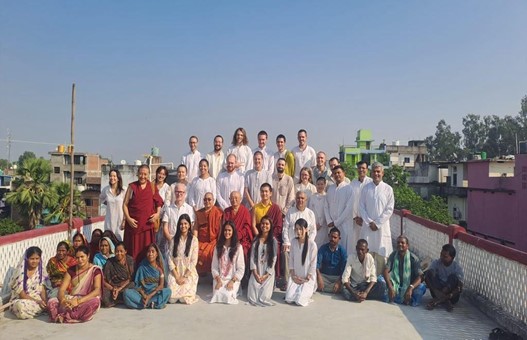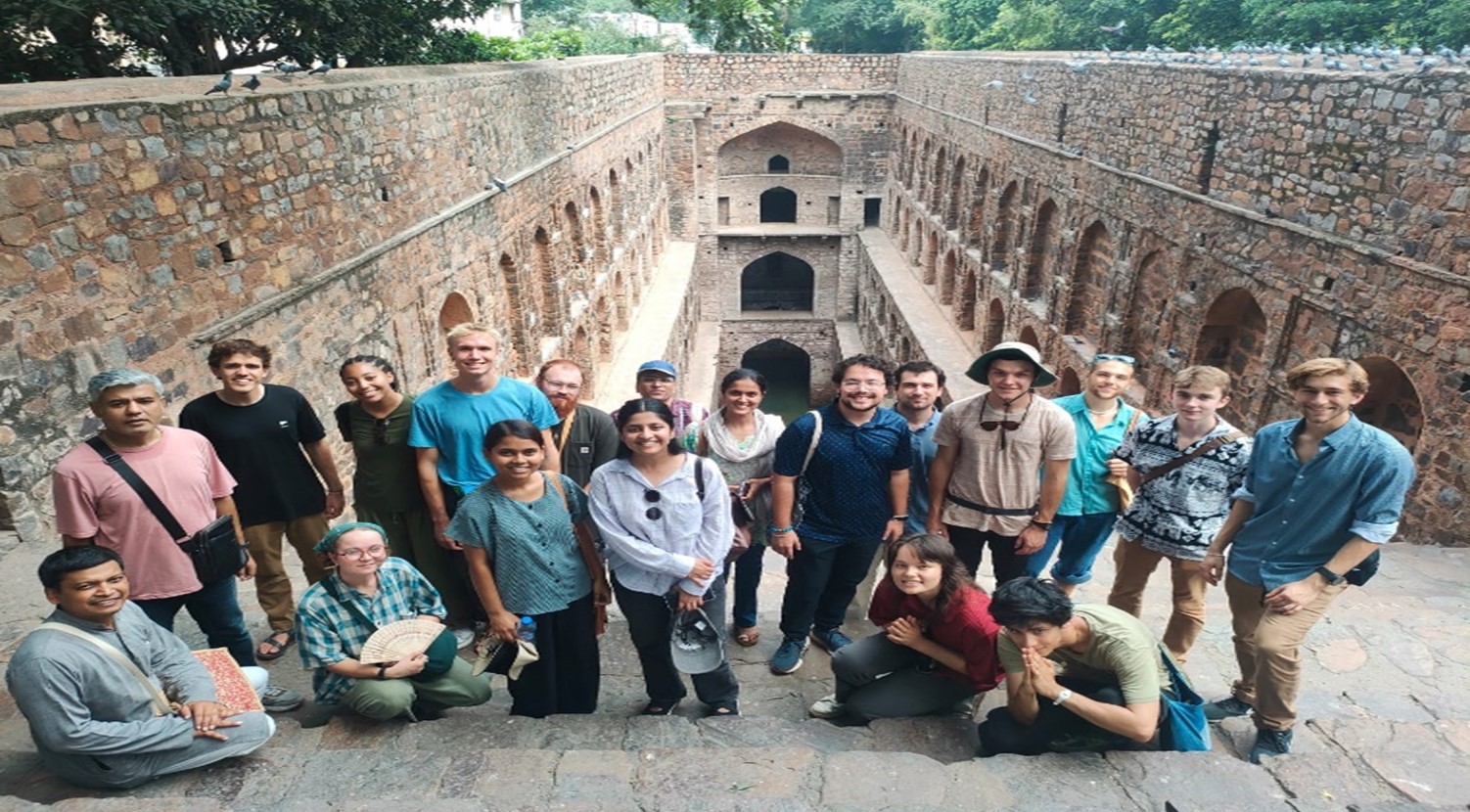Teaching Experience in Bodhgaya, India
Reported by Ms. Sameeksha Kamble, Ph.D. student
Bodhgaya, the place where Siddhārtha Gautama attained perfect enlightenment, is one of the most significant and sacred pilgrimage sites for Buddhists no matter what tradition they belong to. The diverse resources available there make it even more special. It is home to more than 40 Buddhist Temples from almost all Buddhist countries around the world. Everywhere, Buddhism manifests in its unique form, allowing one to be exposed to different Buddhist traditions and the various aspects of their practices.
This fall (September – November 2023 ), thanks to Prof. Mattia and Prof Arthur, I got the opportunity to visit Bodhgaya as a Hindi lecturer in a study abroad program entitled “Buddhist Studies in Bodhgaya”, - conducted by Carleton College, USA. The main theme of the program is to allow the students to explore Buddhism in India and Southeast Asia through interdisciplinary courses and Buddhist meditation traditions. It is structured for those students who are interested in the theory and practice of Buddhism, living a community life and looking for a supportive environment to practice meditation, and who are enthusiastic about carrying out an independent student project in Southeast Asia. The program offers meditation practice and the study of Buddhist philosophy, anthropology, and the history of Buddhism as well as two languages - Hindi and Tibetan.
The program began with a week-long orientation program in Chiang Mai, Thailand. This was my first visit to Chiang Mai. Each day we were introduced to different aspects of the program including some key points regarding how our life is going to be in Bodhgaya, the possible challenges we could face, ways to overcome those challenges, basic introduction to the subjects the students will be learning, etc. It included an introduction to Buddhism in Thailand and, a tour to some of the famous Buddhist and Hindu temples in Chiang Mai. The orientation program was basically for students but it was of huge help for me to better understand the program and of course to get to know the students whom I was going to teach. Apart from getting to enjoy the beautiful province of Chiang Mai, it indeed proved to be a good occasion for both the faculty and the students to know each other better before the program started.
Following the orientation, faculty, staff, and students travel together to Bodhgaya, India. In Bodhgaya, we stayed in a Burmese monastery, which is just a 15-minute walk from Mahābodhi temple. The monastery has hosted the program for nearly 40 years. Both the faculty and the students stayed on the same premises for two and a half months. During this period of nine weeks, everyone, including the staff and students, tries to abide by the five basic precepts, which certainly play an important role in supporting the compulsory morning and evening meditation the students have to participate in.
Classes are held for nine weeks, followed by the three-week independent study period. This was my first experience teaching Hindi, and the most intriguing part of this experience was I had to teach to a group of American students. Every week, we had five classes and five practice sessions. This was my first exposure as a teacher to American students and I would say it indeed went well for me. Of course, at times it was difficult due to language, and cultural barriers and also because of my very little experience of teaching but despite these challenges, I had so much fun teaching them. We enjoyed learning together.
This teaching experience not only allowed me to refine my teaching skills but also to learn how to be a good student. I am genuinely thankful to all the students, especially to those who joined my classes. Whatever amount of success our Hindi class might have achieved, I would like to attribute that to the students; they were all amazing, supportive, active, and friendly. I don’t think I would have done a good job if it was not for the support and acceptance I received from them.
Although I joined the program in the capacity of a lecturer, I was equally a student there. This was my first visit to Chiang Mai, as well as to Bodhgaya, as the program also includes occasional field trips to a few historically significant Buddhist sites like Nalanda, Rajgir, Prāgbodhi, etc. I also got the chance to visit those blessed places. Apart from being able to spend so much time at the most sacred Mahābodhi temple, very lengthy and fascinating conversations with faculty members and the students, especially with those who were interested in philosophy but coming from entirely different academic backgrounds, not only regarding studies but on wide varieties of topics that too more informally and on random occasions sometimes during the meals, or long walks, or at Mahābodhi or while watching movies or while on field visits, stands out for me as the most beautiful part of the journey. It was definitely very helpful in that it gave me a good occasion to zoom out and place the relevance of my knowledge in a broader perspective.
Lastly, I would like to say, all in all, it was an experience worth taking. This amazing journey of Bodhgaya would not have been possible without the extremely friendly and always ready-to-help faculty team and all the other group members. I owe a big thanks to them. Their support and guidance was priceless. I would also like to extend my thanks to the International Buddhist College (IBC); undoubtedly, the learning and teaching experiences at IBC played an important role. From the perspective of gaining experience, the “Buddhist Studies in Bodhgaya” program has indeed offered me a lot.














